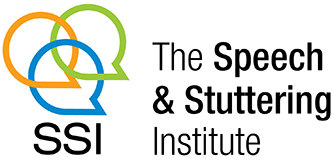What is a Speech Sound Disorder?
The term Speech Sound Disorder (SSD) is used when children’s speech is hard to understand compared to other children their age. They may be leaving out sounds (e.g. “boo” for boot), substituting one sound for another (e.g. “tup” for cup) or distorting sounds (e.g. “bud” for bed) .
There are different types of SSD. Some children may have delayed development of the sound patterns of their language (speech delay/phonological impairment). Others may have trouble with articulation and the production of specific sounds while some children may have trouble planning or controlling the movements involved in speech production (motor speech disorder).
Why do children have speech difficulties?
There can be a number of reasons why a child has difficulty developing clear speech.
The most common type of SSD is a Speech Delay. Children’s speech development can be affected by factors such as:
- hearing difficulties (recurrent middle ear infections and/or sensori-neural hearing loss)
- delayed/disordered language development
- attention difficulties
Children with a Speech Delay typically respond well to treatment and their speech problems usually resolve with adequate therapy.
A smaller group of children have Motor Speech Disorders (MSD). This means they have difficulties planning, moving and/or coordinating muscle movements used in speech (e.g. movements of the jaw, lips, tongue).
There are several types of MSD: Childhood Apraxia of Speech (CAS) (difficulties planning the movements for speech), Dysarthria (difficulties controlling the muscles used in speech) and Speech Motor Delay (some difficulties with both planning and controlling speech movements but not enough symptoms to call it CAS or dysarthria). The speech of children with a MSD tends to be more severe and progress is slower than for children with a speech delay. Even with treatment, some speech difficulties may persist in the long term.
What type of therapy works best for SSD?
It is important to determine which type of SSD a child has because that helps the Speech-Language Pathologist choose the most appropriate treatment approach.
For children with a Speech Delay, treatments that have been shown to be effective help the child listen carefully and learn about sounds in words by providing systematic input about the sound patterns of their language. In addition, children learn to produce the sound patterns and practice using them.
Children with MSD benefit from these techniques but they need much more guidance, feedback and practice in order to learn how to move the different parts of the mouth to produce sounds and use them in words and phrases.
How much therapy does a child need?
The research suggests that children with speech difficulties need approximately 20 therapy sessions to make a noticeable change in their functional communication (Jacoby et al., 2002). Children with moderate to severe speech difficulties will likely need more than this to bring their speech skills to an age appropriate level.
Children with MSD need significantly more therapy and often benefit from more frequent therapy sessions. The literature indicates that twice a week therapy sessions result in better outcomes than weekly sessions for children with CAS (Namasivayam et al., 2013).
Why is early intervention important?
The research suggests that SSDs that persist past the point of school entry are a risk factor for ongoing social and academic problems therefore intervention during the preschool years is critical (Nathan et al., 2004).
The preschool years are a very important time in children’s development. In addition to language and speech development, the foundations for social skills, self confidence and later learning are being formed. Early intervention provides children with new experiences, learning opportunities and skill practice which are all important in setting the path for future social and academic success.
References
Jacoby, G.P., Lee, L., Kummer, A.W., Levin, L., Creaghead, N.A. (2002). The number of individual treatment units necessary to facilitate functional communication improvements in the speech and language of young children. American Journal of Speech Language Pathology, 11, 370-380.
Namasivayam, A.K., Pukonen, M., Goshulak, D., Hards, J., Rudzicz, F., Rietveld, T., Maassen, B., Kroll, R., van Lieshout, P. (2015a). Treatment intensity and childhood apraxia of speech. International Journal of Language & Communication Disorders, 50(4). 529-546.
Nathan, L., Stackhouse, J., Goulandris, N., Snowling, M.J. (2004). The development of early literacy skills mong children with speech difficulties: A test of the “critical age hypothesis”. Journal of Speech, Language, and Hearing Research, 47, 377-391.
